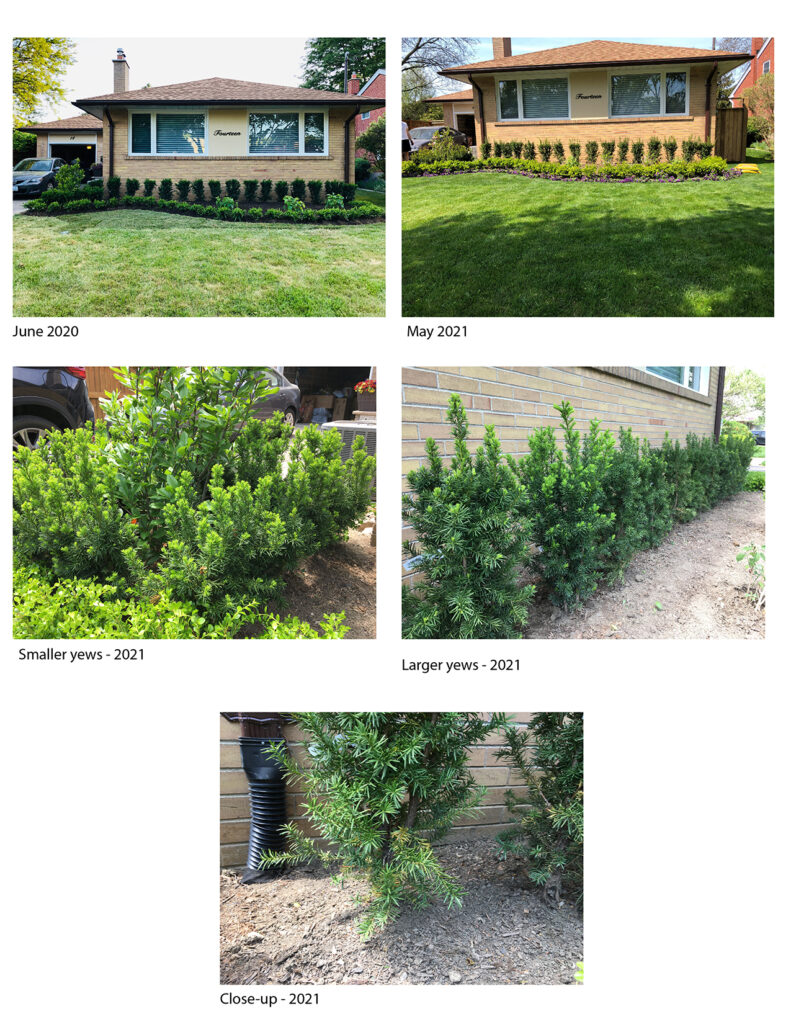
I had a quick inquiry with regards to my hicks yews that were planted in the front of my house last June (front of my house is East facing, located in Etobicoke, and we get a good mix of direct sun and shade throughout the day). All the yews appear to have established well and had no issues throughout the winter months. I’m currently keeping an eye out for the soil to be moist, but not soaking before watering a few times a week since the change in temperature. As per the photos, I noticed the smaller yews surrounding the magnolia tree are consistent in look and pace of sprouting of new growth (lime-green ends). However, the slightly larger yews that run along the wall don’t all seem to be sprouting with the same consistency, but if I look closely, I can see tiny buds on the branches that don’t have the same lime-green growth. In a few of the yews, I am also noticing some slight browning and thinning of needles closer to the base. I just wanted to confirm if all this is okay and if I should expect them all to eventually have the same lime-green growth throughout the remainder of spring and into the summer months, or if I need to address the ones that aren’t quite sprouting at the same pace.
Thank you for contacting Toronto Master Gardeners regarding your Hicks yew.
Hicks Yew (Taxus x media) is a cross between English and Japanese yews. It is hardy and grows easily in full to part shade, in medium moisture soil with good drainage soil. It does not tolerate wet, poorly draining soil. It is susceptible to winter burn if in unprotected areas. Insect pests, while infrequent include weevils, mealybugs and scale.
Be it light, soil, moisture, and wind, each of your yews has a slightly different growing environment so there will be some variation in their growth patterns from one end of the row to the other. Be careful with the watering, a deep watering once a week is likely more than enough. Check the moisture in the soil by pushing your finger 5 cm down into the soil. If the soil is moist and sticks to your finger tip, then there is likely sufficient moisture. If it feels dry, it is time to water. From your description, your yews sound like they are healthy and growing normally. There will be a variation in colour and this will darken from lime-green to a darker green across the growing season as the new growth matures. The slight browning and thinning, at the base of the larger ones, can be due to winter burn as the needles can dry out in the winter wind. This is normal. Periodically, survey your plants for any insect and other problems, if any, in order to deal with this early.
For more information on care of yews, please see:
http://www.missouribotanicalgarden.org/PlantFinder/PlantFinderDetails.aspx?kempercode=f870
Wishing you the best in enjoying your evergreens.

